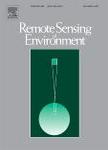版权所有:内蒙古大学图书馆 技术提供:维普资讯• 智图
内蒙古自治区呼和浩特市赛罕区大学西街235号 邮编: 010021

作者机构:Forschungszentrum Julich Inst Bio & Geosci IBG 2 Plant Sci Julich Germany German Aerosp Ctr DLR Remote Sensing Technol Inst Oberpfaffenhofen Germany European Space Agcy ESA Star Grp I-00044 Frascati Italy Forschungszentrum Julich Inst Adv Simulat IAS 8 Data Analyt & Machine Learning Julich Germany
出 版 物:《REMOTE SENSING OF ENVIRONMENT》 (Remote Sens. Environ.)
年 卷 期:2025年第318卷
核心收录:
学科分类:12[管理学] 0830[工学-环境科学与工程(可授工学、理学、农学学位)] 1201[管理学-管理科学与工程(可授管理学、工学学位)] 1002[医学-临床医学] 08[工学] 0816[工学-测绘科学与技术]
基 金:Helmholtz Artificial Intelligence Cooperation Unit, HAICU JURECA Helmholtz Initiative and Networking Fund Forschungszentrum Jülich Deutsches Zentrum für Luft- und Raumfahrt, DLR Jülich Supercomputing Centre, Forschungszentrum Jülich, JSC European Space Agency, ESA, (4000125731/19/NL/LF, 4000125402/ 18/NL/NA) Bundesministerium für Bildung und Forschung, BMBF, (031B0918A, 031A053) Deutsche Forschungsgemeinschaft, DFG, (EXC 2070–390732324) Centre National de la Recherche Scientifique, CNRS, (491111487)
主 题:Solar-induced fluorescence Spectral fitting methods Deep learning Neural networks Hyperspectral sensors Remote sensing SIF retrieval
摘 要:Accurate estimation of solar-induced fluorescence (SIF) from passively sensed hyperspectral remote sensing data has been identified as fundamental in assessing the photosynthetic activity of plants for various scientific and ecological applications at different spatial scales. Different techniques to derive SIF have been developed over the last decades. In view of ESA s upcoming Earth Explorer satellite mission FLEX aiming to provide high- quality global imagery for SIF retrieval an increased interest is placed in physical approaches. We present a novel method to retrieve SIF in the O2-A absorption band of hyperspectral imagery acquired by the HyPlant sensor system. It aims at a tight integration of physical radiative transfer principles and self-supervised neural network training. To this end, a set of spatial and spectral constraints and a specific loss formulation are adopted. Ina validation study we find good agreement between our approach and established retrieval methods as well as with in-situ top-of-canopy SIF measurements. In two application studies, we additionally find evidence that the estimated SIF (i) satisfies a first-order model of diurnal SIF variation and (ii) locally adapts the estimated optical depth in topographically variable terrain.